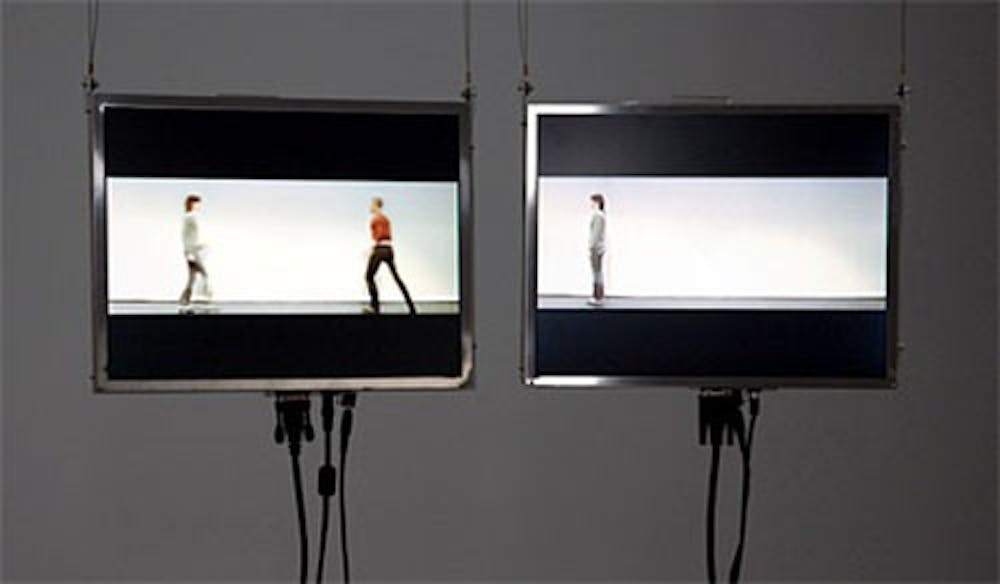Flashpoint Gallery looked unusually dark for an exhibition opening at 6 p.m. Nov. 11. Transformed into a space where screens and projectors showed performance of human relationships that interacted with viewers, the gallery was dim except for lights emanating from the projectors onto the walls and screens setup throughout the space.
The exhibit, Andy Holtin’s “A Theatre of Objects,” is showing through Dec. 21. Holtin is an American University studio art assistant professor, as well as a working artist.
Although it was difficult at first to figure out what Holtin was trying to achieve in his works, he explained in an interview with The Eagle how he wanted to explore “our expectations of connection, [and] how we believe and understand connections between humans and their behavior.”
“Passage,” a piece where nine screens and video players hang by cords from the ceiling in a circle, portrays Holtin’s vision of human behavior through performance.
In this piece, an actress and actor walk, run and leap from screen to screen at different rhythms and with a variety of movements. The spectator stands in the center of the circle of screens, interacting with the art and realizing the video never loops back to the same point.
“[It] creates a live movement because the interactions happening are not scripted,” Holtin said.
In “Glance,” two screens, one with the face of a man and the other, the face of a woman, shift toward and away from one another, reacting to the “glances” each one gives the other.
In this way, the apparatus (in this case the screens and wires) is active, as the screens behave like human heads, reacting and interacting with one another.
The interactions that occur in Holtin’s pieces are emotional and comical.
Holtin’s humor is found in the expressions his performers use specifically in “Glance.” Spectators cannot resist smirking at the doubtful and suspicious looks the woman gives the man, and the exasperated expressions the man gives the woman. It is the man versus woman relationship we can all relate to in some way that makes the art comical.
Though only three of Holtin’s pieces were on display, their impact was greater than their number, forcing the viewer think about how interactions happen differently in different environments.





